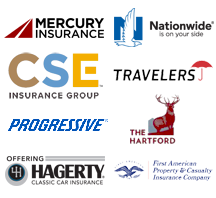Restaurants, auto repair shops, real estate offices and nearly all other businesses have signs that tell their customers their name, address, hours of operation and so on. Signs may be simple or complex and many businesses typically use lighted signs. The Sign policy created by Insurance Services Office is available to insure against the loss or destruction of signs, including fluorescent, neon, automatic or mechanical sign. Coverage also extends to lamps. However, fixed, non-lighted signs (such as billboards) are not eligible under a sign policy, even if they are illuminated by separate electric lights.
A policy requires that, in order to be covered, each sign must be specifically described including lettering information, the sign's location and coverage amount (limit). If the business buying the coverage wants to reduce its coverage cost by using a deductible, it has to accept one equal to 5% of the applicable coverage limit.
Example: An insured’s Sign policy has a limit of $10,000 and a 5% deductible applies. Later, the insured files a loss and the insurer determines total damages of $1,329. Because of the deductible and limit, the insured is paid $829 ($1,329 - $500 [10,000 X 5%]).
The policy protects against any risk of tangible damage that is not excluded or limited in the coverage form. Some of the events that could cause loss that is not covered include:
- Governmental Action - such as property seized by authorities for emergency use
- Nuclear Hazard
- War and Military Action
- Consequential (indirect) loss - such as a storm destroys a source of power and a company's sign can't be lit for several weeks
- Any breakage that occurs during transportation, installation, repairing or dismantling
- Dishonest acts - such as a custom sign made of expense, in-laid glass panels is stolen by an employee of the covered business
- Short-circuiting or electrical surges
- Tricks or fraud - such as crooks take the sign by posing as municipal electrical inspectors
The size, geographic location and specific location are all elements that an insurance company would study before deciding whether to provide sign coverage. The larger the sign, the more potential damage can occur. Signs that are located away from the main premises are more vulnerable to vandalism and theft. Signs are very easily damaged by windstorm and hail so geographic considerations must be made.
Call Sutherland-Scherff today and we can help make sure that your signs are covered properly.




